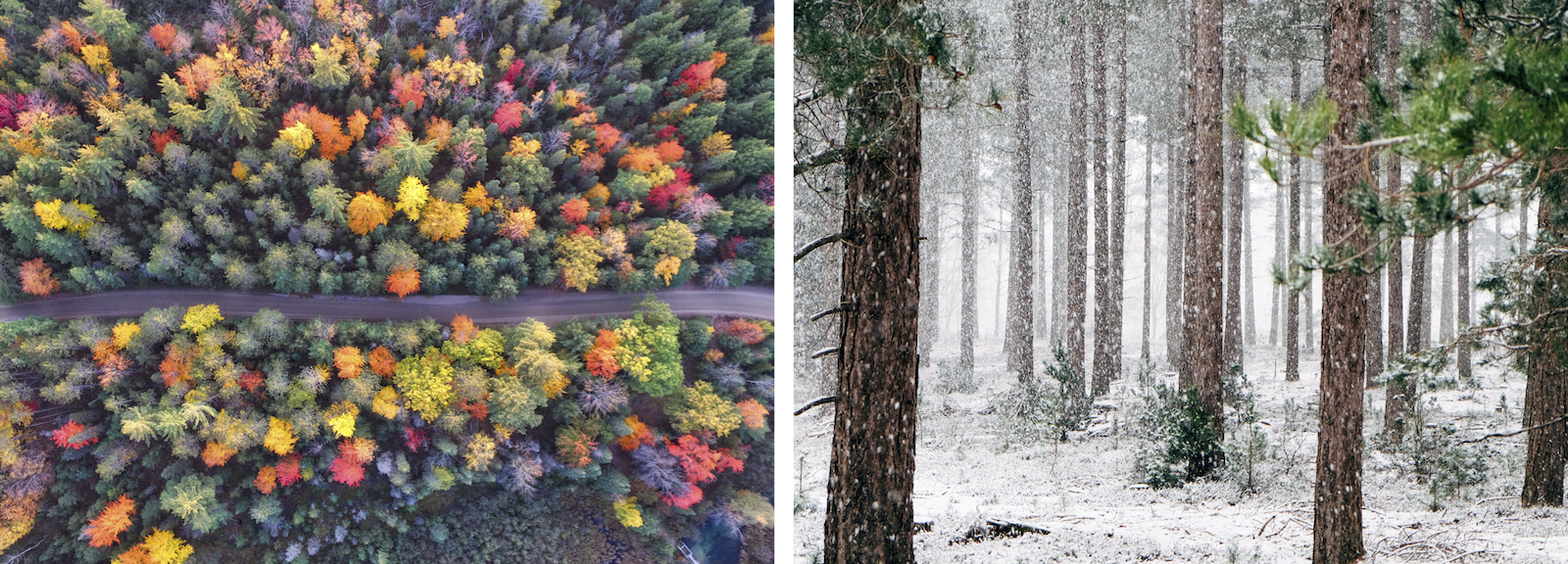By Hannah Wagner
Happy Groundhog Day! One of the strangest American traditions took place this morning, and the ending wasn’t ideal. A famous groundhog named Phil saw his shadow… What a bummer! While I’m sure you’re disappointed to have to bear six more weeks of winter, have you ever wondered what cold weather means for trees? Let’s dive into the amazing defenses that trees have developed to outlast the coldest months of the year.
Depending on where you live in the United States, the trees in your yard, on your street, or growing in your local state forest may be mostly deciduous or coniferous. It’s fairly easy to tell the types a part: deciduous trees lose their leaves annually, while coniferous trees, keep their leaves (or “needles”) throughout the year. There are a few exceptions, of course, like larch and bald cypress trees, which are technically deciduous conifers.
Broadleaf, deciduous trees lose their leaves in fall to conserve water during colder months. Coniferous trees’ needles are much better at retaining water, so they keep them year-round (a trait that has earned them the moniker of “evergreen”).
One of the best defenses that trees have against the elements is their bark. The rough exterior of tree trunks and branches protect trees from a host of threats like diseases, pests, and fire. In winter, tree bark provides insulation for the interior of the tree while also dispersing heat.
When trees go dormant for the winter, it’s because they’ve sensed a shift in levels of daylight. It’s at this point that they begin making changes at the cellular level to become more tolerant of cold temperatures. A tree’s metabolism, and other internal processes, also slow down in order to conserve energy.
Trees have cells that transport water up and down from their roots to their canopies. But in cold temperatures, these cells can be killed if the water they transport freezes. Impressively, trees have developed a way to keep the water flowing by producing a special kind of protein that allows water to safely freeze in between cells. When the water is drawn out of cells to freeze, the remaining water within the cells becomes thick and sugary. This syrupy liquid is known as sap. Sugar maples, and some other tree species, can be tapped for their sap, and when boiled, the sap turns to maple syrup!
Once spring rolls around (and temperatures rise and the days get longer) trees reverse these internal processes and return to actively growing.
Phil says we’ll need to wait six more weeks before we start seeing buds on trees. So, until then, take the advice of state forestry agencies, like the Maine Forest Service, and tend to your trees this winter. Doing so can give them the best chance at a fruitful growing season.
Hannah Wagner, NASF’s communications coordinator, can be reached by email at hwagner@stateforesters.org.


 Broadleaf, deciduous trees lose their leaves in fall to conserve water during colder months. Coniferous trees’ needles are much better at retaining water, so they keep them year-round (a trait that has earned them the moniker of “evergreen”).
Broadleaf, deciduous trees lose their leaves in fall to conserve water during colder months. Coniferous trees’ needles are much better at retaining water, so they keep them year-round (a trait that has earned them the moniker of “evergreen”).